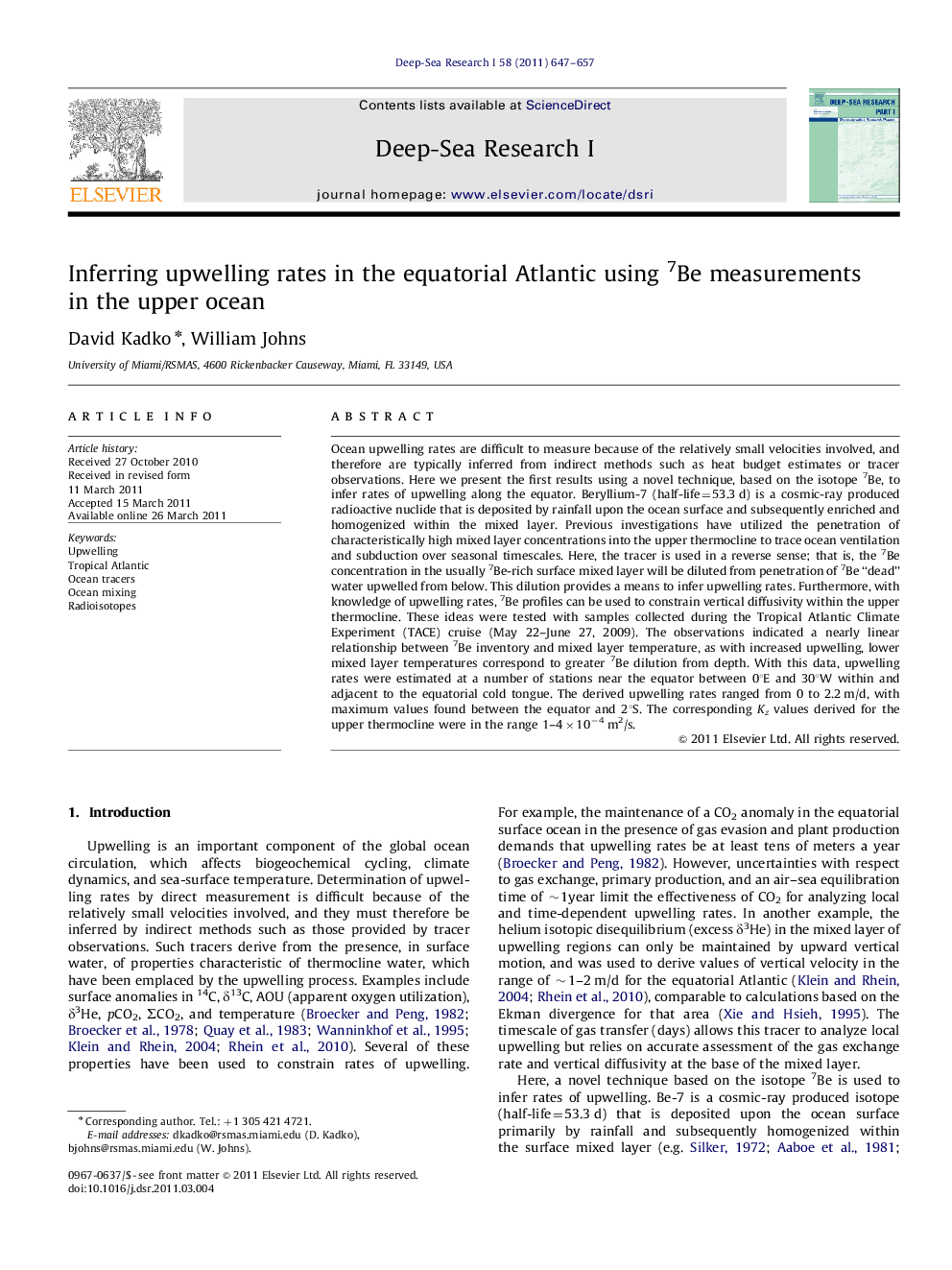| Article ID | Journal | Published Year | Pages | File Type |
|---|---|---|---|---|
| 4534841 | Deep Sea Research Part I: Oceanographic Research Papers | 2011 | 11 Pages |
Ocean upwelling rates are difficult to measure because of the relatively small velocities involved, and therefore are typically inferred from indirect methods such as heat budget estimates or tracer observations. Here we present the first results using a novel technique, based on the isotope 7Be, to infer rates of upwelling along the equator. Beryllium-7 (half-life=53.3 d) is a cosmic-ray produced radioactive nuclide that is deposited by rainfall upon the ocean surface and subsequently enriched and homogenized within the mixed layer. Previous investigations have utilized the penetration of characteristically high mixed layer concentrations into the upper thermocline to trace ocean ventilation and subduction over seasonal timescales. Here, the tracer is used in a reverse sense; that is, the 7Be concentration in the usually 7Be-rich surface mixed layer will be diluted from penetration of 7Be “dead” water upwelled from below. This dilution provides a means to infer upwelling rates. Furthermore, with knowledge of upwelling rates, 7Be profiles can be used to constrain vertical diffusivity within the upper thermocline. These ideas were tested with samples collected during the Tropical Atlantic Climate Experiment (TACE) cruise (May 22–June 27, 2009). The observations indicated a nearly linear relationship between 7Be inventory and mixed layer temperature, as with increased upwelling, lower mixed layer temperatures correspond to greater 7Be dilution from depth. With this data, upwelling rates were estimated at a number of stations near the equator between 0°E and 30°W within and adjacent to the equatorial cold tongue. The derived upwelling rates ranged from 0 to 2.2 m/d, with maximum values found between the equator and 2°S. The corresponding Kz values derived for the upper thermocline were in the range 1–4×10−4 m2/s.
► 7Be is a promising new technique for estimating tropical upwelling rates within seasonal timescales. ► The method is based on the dilution of the upper ocean 7Be inventory from penetration of 7Be “dead” water upwelled from below. ► Upwelling rates were in the range 0–2.2 m/d for the equatorial Atlantic. ► The 7Be data were found to fit fairly well to exponential profiles, and yielded corresponding Kz values in the range ∼1–4×10−4 m2/s.
